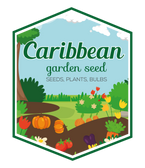When to Start Seeds Indoors For the Greatest Success
Beginning seed germination indoors and identifying optimal seed types are important aspects of gardening. It is a continuous learning process aiming to grow the strongest seedlings suitable for your growing conditions. This approach enables cost savings and expands your options for various vegetables, flowers, and herbs.
Your Zone and Frost-Free Date
The U.S. Department of Agriculture (USDA) publishes plant hardiness zone maps based on minimum winter temperatures.
Plants to Start Indoors From Seed
Certain plants thrive when started early indoors from seed. Others cannot withstand transplantation, and some have such rapid and dependable germination that it is not worthwhile to start them indoors. Identifying these distinctions will aid in planning and maintaining a fruitful garden, based on your individual schedule and expertise.
When to start seeds indoors for cool weather crops, like cabbages, broccoli and leafy greens, is determined by counting back from the suggested "planting out" date rather than the "frost-free date." WE recommend planting as soon as the ground can be worked. Healthy cool weather seedlings withstand frost.
Fruits and Vegetables
Vegetables that require a long growing season are good choices to start indoors. If your season for cool weather crops is short, consider starting cole crops and leafy greens early. Vining fruits like melons are sweeter when they get plenty of sun, and winter squashes develop more sugars when temperatures fall. These crops can be timed to mature when growing conditions are ideal. Some of the easiest to grow with the best results include:
- All tomato varieties
- Bell peppers
- Chili peppers
- Eggplant
- Melons
- Winter squash
- Cole crops-cabbage, kale, cauliflower, Brussels sprouts
- Leafy greens-lettuces, Swiss chard, spinach
Annual and Perennial Flowers
Starting ornamentals indoors usually results in earlier flowers with a longer bloom time. Exceptions like Zinnias sprout reliably by scattering seed after the last frost. Perennials have specific growing requirements, making annuals a better choice to grow from seed.
- Bachelor button
- Calendula
- Coleus
- Marigold
- Nasturtium
- Sweet Pea
Herbs
Plenty of herbs, including popular kitchen herbs, give good results when started indoors. Some perennial herbs, like French Tarragon, may be difficult to start, so consider purchasing a seedling. Start these seeds early for your herb garden..
- basil varieties
- mint varieties
- oregano
- parsley
- sage
- savory
- thyme
| Recommended No. of Weeks to Start Seeds, Prior to Frost Free Date | |||||
|---|---|---|---|---|---|
| Vegetable | # Weeks | Flowers | # Weeks | Herbs | # Weeks |
| Artichoke | 8-10 | Ageratum | 6-8 | Basil | 6-8 |
| Broccoli | 4-6 | Alyssum | 8-12 | Catnip | 8-12 |
| Brussels Sprouts | 4-6 | Batchelor Button | 4-6 | Chamomile | 8-12 |
| Cabbage | 4-6 | Calendula | 6-8 | Chervil | 6-8 |
| Cantaloupe | 3-4 | Coleus | 8 | Chives | 12-14 |
| Cauliflower | 4-6 | Dahlia | 4-6 | Coriander | 6-8 |
| Celery | 10-12 | Daisy | 6-8 | Dill | 6-8 |
| Chinese Cabbage | 4-6 | Fuchsia | 18-20 | Feverfew | 8-12 |
| Collards | 4-6 | Godetia | 4-6 | Lemon Balm | 6-8 |
| Cucumbers | 3-4 | Impatiens | 8-10 | Mint | 12-14 |
| Eggplant | 8-10 | Lobelia | 12-14 | Oregano | 12-14 |
| Kale | 4-6 | Marigold | 6-8 | Parsley | 12-14 |
| Leeks | 8-10 | Nasturtium | 4-6 | Sage | 6-8 |
| Lettuce | 4-5 | Nemesia | 6-8 | Savory | 6-8 |
| Okra | 4-6 | Pansy | 8-12 | Thyme | 8-12 |
| Onion | 8-10 | Petunia | 8-10 | ||
| Pepper | 8 | Poppy | 4-8 | ||
| Pumpkin | 3-4 | Snapdragon | 8-10 | ||
| Spinach | 4-6 | Sweet Pea | 4-6 | ||
| Squash | 3-4 | Zinnia | 4 | ||
| Swiss Chard | 4-6 | ||||
| Tomato | 6-8 | ||||
| Watermelon | 3-4 | ||||

![[Seeds] - Caribbeangardenseed](http://caribbeangardenseed.com/cdn/shop/files/gift-card-gift-card-1_1024x1024_dfa857db-9150-4315-a362-7f0bb3fb9c47_60x28.png?v=1722895789)